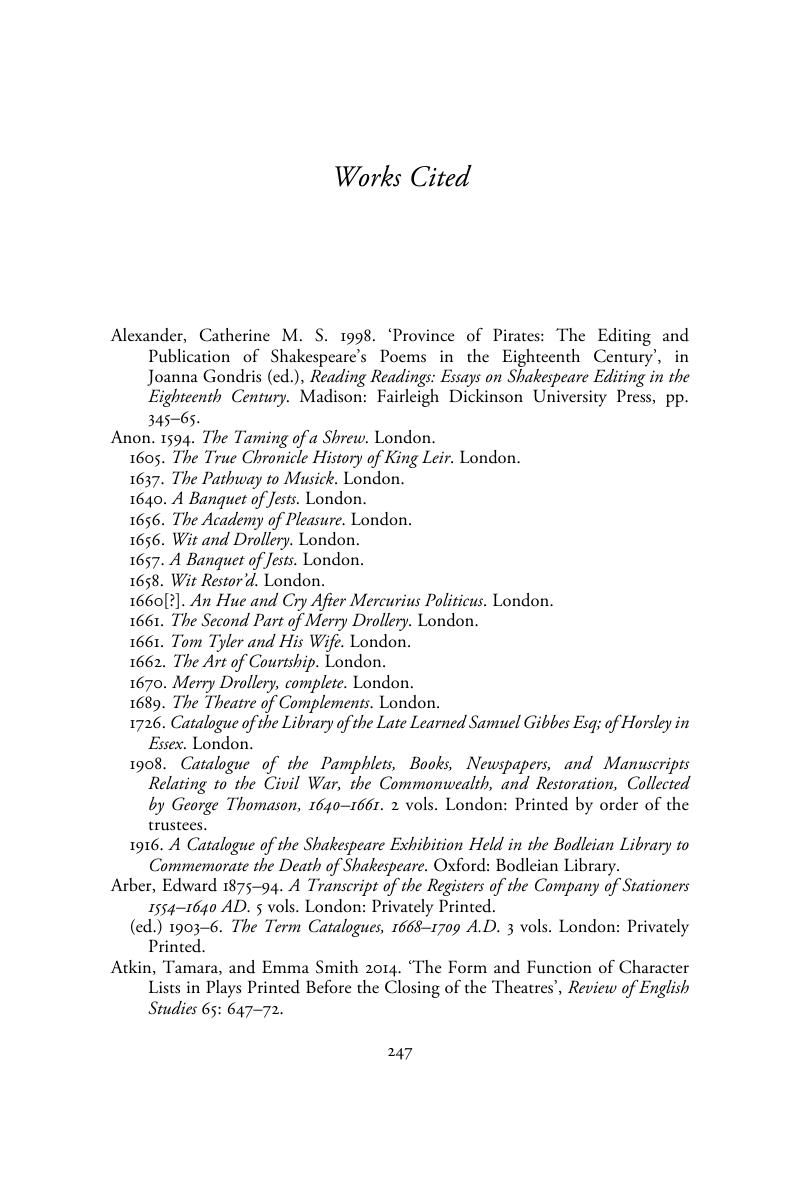Works Cited
Published online by Cambridge University Press: 30 September 2017
Summary

- Type
- Chapter
- Information
- Canonising ShakespeareStationers and the Book Trade, 1640–1740, pp. 245 - 246Publisher: Cambridge University PressPrint publication year: 2017

